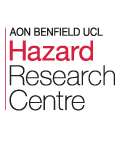Earthquakes
IRIS Seismic Monitor
Submitted by jwalling on Mon, 07/05/2007 - 08:47. Academic – earthquake map – EarthquakesSeismic Monitor allows you to monitor global earthquakes in near real-time, visit seismic stations around the world, and search the web for earthquake or region-related information. You can also view seismograms and make dataset requests via its WILBER interface.
Global Earthquake Map
Submitted by jwalling on Mon, 07/05/2007 - 03:01. earthquake map – Earthquakes – International – NGOLatest Earthquake Map & News. Earthquake locations are displayed on a flash map, selected from today or the past 7 days. Links to news articles are provided.
STOP DISASTERS!
Submitted by administrator on Sat, 28/04/2007 - 14:34. disaster risk reduction – Earthquakes – education – Floods – schools – Tsunamis – UN organisation – Wildfires – WindstormsThis game for the UN ISDR tackles the very real issue around the World of saving lives and reducing the financial impact that natural hazards cause when they turn into disasters. The aim of this game is simply to raise awareness of how disasters affect people every day and how often very simple measures can save many lives.
Colorado Natural Hazards Center
Submitted by administrator on Thu, 19/04/2007 - 16:35. Academic – Drought – Earthquakes – Flash floods – Floods – International – Landslide – Mass movement – Mud slide – Rock avalanche – Severe local storm – Snow avalanche – Storm surge – Storm surge – Tornadoes – Tropical cyclone – Tropical storm – Tsunamis – Volcanic activity – Wildfires – WindstormsSince 1976, the Natural Hazards Center has served as a national and international clearinghouse of knowledge concerning the social science and policy aspects of disasters. The Center collects and shares research and experience related to preparedness for, response to, recovery from, and mitigation of disasters, emphasizing the link between hazards mitigation and sustainability to both producers and users of research and knowledge on extreme events.
Cascades Volcano Observatory
Submitted by gspeer on Wed, 18/04/2007 - 16:15. CVO – Earthquakes – Government – Mass movement – Regional – Volcanic activityThe U.S. Geological Survey's Cascades Volcano Observatory (CVO) strives to serve the national interest by helping people to live knowledgeably and safely with volcanoes and related natural hazards including earthquakes, landslides, and debris flows in the western United States and elsewhere in the world. CVO assesses hazards before they occur by identifying and studying past hazardous events. We provide warnings during volcanic crises by intensively monitoring restless volcanoes and interpreting results in the context of current hazards assessments.
GLIDE number
Submitted by administrator on Tue, 17/04/2007 - 20:52. Drought – Earthquakes – Flash floods – Floods – International – Landslide – Mass movement – Mud slide – other – Rock avalanche – Severe local storm – Snow avalanche – Storm surge – Storm surge – Tornadoes – Tropical cyclone – Tropical storm – Tsunamis – Volcanic activity – Wildfires – WindstormsAccessing disaster information can be a time consuming and laborious task. Not only is data scattered but frequently identification of the disaster can be confusing in countries with many disaster events. To address both of these issues, Asian Disaster Reduction Center (ADRC) proposed a globally common Unique ID code for disasters.
UNOSAT
Submitted by administrator on Sun, 15/04/2007 - 12:10. Drought – Earthquakes – Flash floods – Floods – International – Landslide – mapping – maps – Mass movement – Mud slide – Rock avalanche – Severe local storm – Snow avalanche – Storm surge – Storm surge – Tornadoes – Tropical cyclone – Tropical storm – Tsunamis – UN organisation – Volcanic activity – Wildfires – WindstormsUNOSAT is a United Nations programme created to provide the international community and developing countries with enhanced access to satellite imagery and Geographic Information System (GIS) services. These tools are used mainly in humanitarian relief, disaster prevention and post crisis reconstruction.
UNOSAT is the United Nations Institute for Training and Research (UNITAR) Operational Satellite Applications Programme implemented in co-operation with the UN Office for Project Services (UNOPS). In addition, partners from public and private organizations constitute the UNOSAT consortium.
AlertNet
Submitted by administrator on Wed, 21/03/2007 - 18:21. Drought – Earthquakes – Flash floods – Floods – International – Landslide – Mass movement – Mud slide – News & Media – Rock avalanche – Severe local storm – Snow avalanche – Storm surge – Storm surge – Tornadoes – Tropical cyclone – Tropical storm – Tsunamis – Volcanic activity – Wildfires – WindstormsReuters AlertNet is a humanitarian news network based around a popular website. It aims to keep relief professionals and the wider public up-to-date on humanitarian crises around the globe.
Humanitarian Early Warning Service
Submitted by administrator on Wed, 21/03/2007 - 14:22. Drought – Earthquakes – Flash floods – Floods – International – Severe local storm – Storm surge – Storm surge – Tornadoes – Tropical cyclone – Tropical storm – UN organisation – Volcanic activity – WindstormsThe HEWSweb service is an inter-agency partnership project aimed at establishing a common platform for humanitarian early warnings and forecasts for natural hazards. It has dedicated pages for each type of hazard; which includes drought, floods, storms, locust, volcanoes, earthquakes, weather, El Nino and other hazards.
SPIDER Network
Submitted by administrator on Wed, 21/03/2007 - 14:06. Academic – Drought – Earthquakes – Flash floods – Floods – Landslide – Mass movement – Mud slide – Rock avalanche – Severe local storm – Snow avalanche – Storm surge – Storm surge – Tornadoes – Tropical cyclone – Tropical storm – Tsunamis – Volcanic activity – Wildfires – WindstormsSince January 2006, seven organisations (University College London, Cambridge University, University of East Anglia, Portsmouth University, ActionAid UK, Coventry University and the Institute of Development Studies) have been working together to re-evaluate the role of science in disaster risk management.
Based around a series of linked meetings over two years, the network aims to explore the interface between physical and social science approaches to managing disaster risk and uncertainty.



